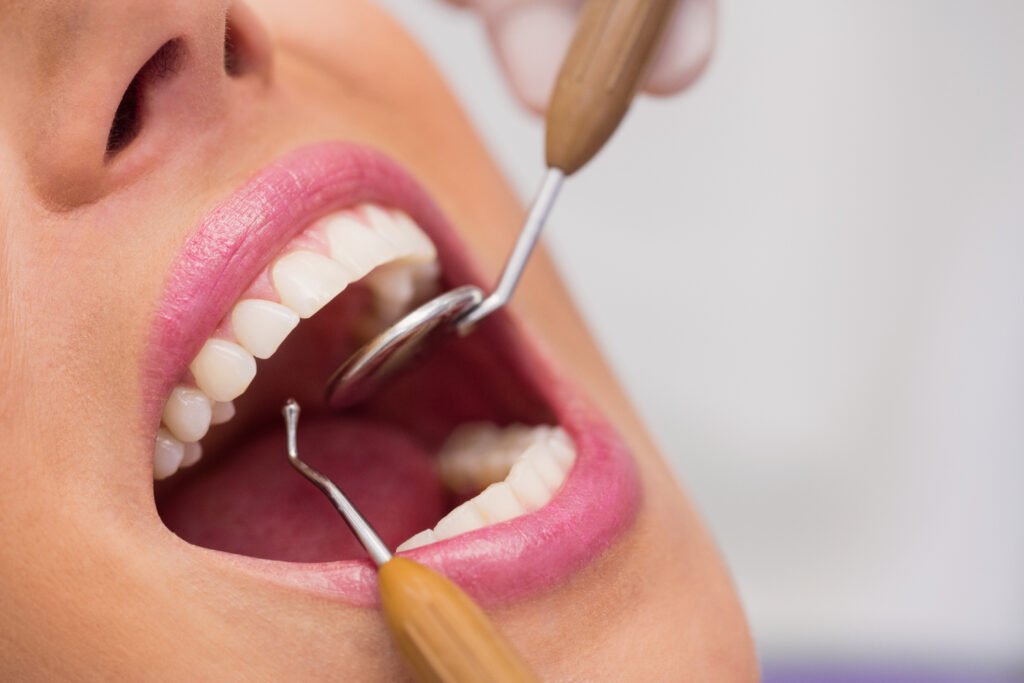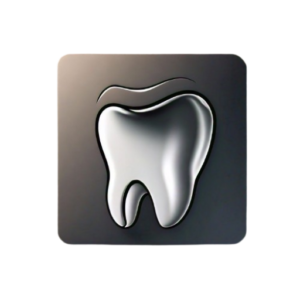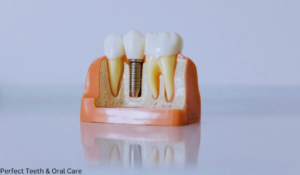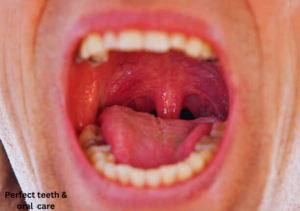Overview
Oral cancer, often referred to as mouth cancer, is a broad term used to describe various types of cancer that occur inside the mouth. This condition affects not just the lips and mouth but may also impact surrounding areas like the throat, head, and neck if left untreated. Recognizing early symptoms is critical because these changes, such as white patches, persistent sores, or areas that bleed, might indicate a potential cancer.
It’s easy to overlook these signs, especially when they don’t seem serious at first. But when issues like sores or patches don’t go away, they can worsen. If left untreated, the cancer may spread throughout the body. Did you know that approximately 63% of people with oral cavity cancer are still alive five years after diagnosis? This statistic highlights the importance of early detection and timely treatment. Stay alert to subtle changes in your mouth, as they could make all the difference in catching this common problem early.

Signs and Symptoms
Oral cancer has many signs and symptoms that might be mistaken for common problems or normal changes in your mouth. One of the early warning signs includes patches inside your mouth that you can’t scrape away. These may indicate pre-cancerous conditions and should not be ignored.
The following conditions involve patches in your mouth or throat and appear in different colors:
- Leukoplakia: These are flat white or gray patches in your mouth or throat.
- Erythroplakia: These are slightly raised or flat red patches that might bleed when scraped.
- Erythroleukoplakia: These are a mix of red and white patches.
Other common signs and symptoms of oral cancer include:
- Persistent sores on your lip or inside your mouth that bleed easily and don’t heal within two weeks.
- Rough spots or crusty areas on your lips, gums, or inside your mouth.
- Unexplained bleeding in your mouth.
- Numbness, pain, or tenderness in your face, neck, or mouth that occurs without apparent cause.
- Difficulty chewing, swallowing, speaking, or moving your jaw or tongue.
- Unintentional weight loss.
- Persistent earache.
- Chronic bad breath.
Causes
Mouth cancers occur when cells in the lips or mouth undergo changes or mutations in their DNA. These mutations alter the normal instructions for cell growth and division. Instead of healthy cells dying as they should, they start growing and dividing uncontrollably. Over time, these abnormal cells accumulate, forming a tumor that can spread to other areas of the mouth, head, neck, or even the rest of the body. This process typically begins in flat, thin cells called squamous cells, which line the inside of the mouth. In fact, most oral cancers are squamous cell carcinomas.
The exact causes of these mutations are not always clear, but doctors have identified several factors that can increase the risk. Around 75% of people who develop this cancer have certain habits like smoking cigarettes, cigars, pipes, or using smokeless tobacco such as chewing tobacco, dip, or snuff. Others use water pipes like hookahs or shush. Drinking excessive alcohol also raises risk. Additionally, sun exposure without protecting the lips using sunblock, human papillomavirus (HPV) infections, and a family history of cancer can play a role. Interestingly, about 25% of people with oral cancer don’t smoke or have any known risk factors, showing how unpredictable this disease can be.
Risk Factors for Mouth Cancer
- Tobacco use: Smoking any kind of cigarettes, cigars, pipes, or using chewing tobacco and snuff increases the risk.
- Heavy alcohol use: Drinking large amounts of alcohol raises the danger, especially when combined with tobacco.
- Excessive sun exposure: Spending too much time in the sun without protection can damage the lips and lead to cancer.
- Sexually transmitted virus: The human papillomavirus (HPV) is linked to an increased risk of mouth cancer.
- Weakened immune system: A compromised immune system makes the body more vulnerable to developing cancer.
Stages of Oral Cancer
When doctors diagnose oral cancers, they use diagnostic tests to help determine the cancer’s stage. These tests describe the cancer’s location, whether it has penetrated the surface area where it was found, and if it has spread to other parts of the body. Staging is done using the TNM system: T stands for the size and location of the primary tumor, N shows if the tumor has spread to lymph nodes, and M indicates if it has metastasized or moved to distant areas. This information helps healthcare providers recommend treatment and predict recovery chances.
- T1: The tumor in your mouth measures 2 centimeters or less.
- T2: The tumor measures more than 2 centimeters but isn’t larger than 4 centimeters.
- T3: The tumor is larger than 4 centimeters.
Diagnosis and Tests for Oral Cancer
Diagnosis
Your dentist might spot potential oral cancer during one of your regular checkups. If anything looks unusual, they may recommend preliminary tests or refer you to an oral and maxillofacial surgeon or a head and neck surgeon. These specialists, often called ENT specialists (ear, nose, and throat doctors), are experts in diagnosing oral cancer. A thorough physical examination is usually the first step, where the healthcare provider checks the entire inside of your mouth, feeling for abnormalities. They’ll also examine your head, neck, and face for signs of pre-cancer or cancer. Early detection during routine exams is crucial, as oral cancer can spread quickly.
Tests
Several tests help confirm the diagnosis. A brush biopsy, also known as a scrape biopsy or exfoliative cytology, involves using a small brush or spatula to gently collect cells from the suspicious area for analysis. In some cases, an incisional biopsy is performed, where a small piece of tissue is removed for examination. For a more detailed view of hard-to-reach areas, providers may use indirect laryngoscopy and pharyngoscopy, employing a small mirror on a thin handle to inspect the throat, tongue base, and larynx (voice box). Alternatively, a direct flexible pharyngoscopy or laryngoscopy involves using an endoscope—a thin, flexible tube with a light and viewing lens—to look at areas in the throat and mouth that mirrors cannot access.
These painless procedures, often taking only a few minutes, are essential for early detection and treatment planning, increasing the chances of recovery significantly. Regular dental checkups provide an excellent opportunity for such oral cancer examinations, ensuring that potential issues are caught early.
Understanding Oral Cancer Treatment Options
Main Treatment Options for Oral Cancer:
- Surgery: Removal of cancerous tissue from the mouth.
- Radiation Therapy: Targets remaining cancer cells or shrinks tumors before surgery.
- Chemotherapy: Uses drugs to kill cancer cells; can be given before or after surgery, or as the primary treatment if cancer has spread.
Discussing Treatment with Your Doctor:
- Talk about the purpose of each treatment option.
- Understand potential side effects and ways to manage them.
Factors Considered by Your Healthcare Provider:
- Type of oral cancer you have.
- Whether the cancer has spread to other parts of your mouth, throat, or body.
- Your general health and age.
Prevention of Oral Cancer
Stop Using Tobacco:
- Avoid smoking and chewing tobacco.
- Tobacco contains dangerous cancer-causing chemicals that harm mouth cells.
Limit Alcohol Consumption:
- Drink in moderation: Men: Up to two drinks per day.
- Chronic excessive use can irritate vulnerable cells and increase cancer risk.
Protect Against Excessive Sun Exposure:
- Use sunscreen on lips and skin.
- Wear a broad-brimmed hat to shield your face from UV rays.
Regular Dental Check-Ups:
- Visit the dentist regularly for check-ups.
- Dentists can inspect your mouth for abnormal areas and early signs of cancer.
Maintain a Well-Balanced Diet:
- Eat a diet rich in fruits and vegetables to support oral health.
Oral cancer Awareness Month
April is Oral Cancer Awareness Month, a vital initiative aimed at educating the public about the risks, signs, and prevention of oral cancer. This observance emphasizes the importance of early detection, as timely screenings can significantly improve survival rates and reduce treatment complications. With rising cases linked to human papillomavirus (HPV) and changing lifestyle factors, it is crucial for individuals to be vigilant about their oral health. Dental professionals often offer free screenings during this month, making it an ideal time for everyone to prioritize their oral health and seek regular check-ups.
FAQs About Oral Cancer
1. Are there activities that increase the risk of oral cancer?
Certain habits can increase your risk of developing oral cancer, including:
- Smoking: This includes cigarettes, cigars, and pipes.
- Using Smokeless Tobacco: This encompasses products like chewing tobacco, snuff, and hookah.
- Excessive Alcohol Consumption: Drinking large amounts of alcohol can elevate your risk.
- Prolonged Sun Exposure: Not protecting your lips from the sun can lead to increased risk.
- HPV Infection: Having human papillomavirus (HPV) is a known risk factor.
- Family History: A family history of oral cancer can also raise your risk.
It’s important to note that about 25% of oral cancer cases occur in individuals who do not have any obvious risk factors. Let me know if you need any further adjustments!
2. What does oral cancer look like early on?
Early signs of oral cancer may include:
- White or Red Patches: These can appear anywhere in the mouth.
- Non-Healing Sores: Sores that do not heal over time should be monitored.
- Lumps or Thickened Areas: Look for unusual lumps or thickened spots on the tongue, gums, or cheeks.
Regular dental visits and self-examinations can help detect these early changes, allowing for prompt action if necessary. If you need any further modifications, just let me know!
3. How is oral cancer treated?
Treatment for oral cancer typically depends on the stage and location of the disease, and may include:
- Surgery: This involves removing the affected tissue.
- Radiation Therapy: This treatment aims to destroy cancer cells.
- Chemotherapy: This approach is used to halt the growth of cancer cells.
- Additionally, emerging treatments like immunotherapy are gaining popularity as potential options. Let me know if you need any further changes!
4.Can oral cancer be prevented?
Although not all cases of oral cancer are preventable, you can reduce your risk by:
- Avoiding Tobacco and Excessive Alcohol: Steer clear of tobacco products and limit alcohol consumption.
- Getting the HPV Vaccine: Vaccination can help protect against human papillomavirus (HPV).
- Maintaining Good Oral Hygiene: Practice proper oral care and schedule regular dental check-ups.
5. How does oral cancer differ from gum disease?
Gum disease arises from inadequate oral hygiene and can lead to inflammation, bleeding, and even tooth loss. In contrast, oral cancer is characterized by abnormal cell growth that has the potential to spread and become life-threatening. It is important to have any persistent sores or unusual patches in the mouth examined by a healthcare professional. Let me know if you need any further changes!
6. Can you die from mouth cancer?
Yes, if left untreated, mouth cancer can be life-threatening. However, early detection greatly enhances survival rates, highlighting the importance of awareness and regular screenings. If you need any more adjustments or additional information, just let me know!


